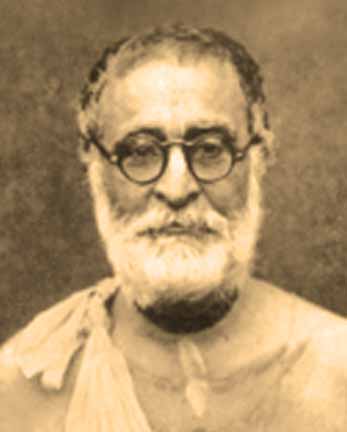śrī śrī guru gaurāṅga jayataḥ!

Year 11, Issue 1
Posted: 5 February 2018
Dedicated to
nitya-līlā praviṣṭa oṁ viṣṇupāda
Śrī Śrīmad Bhakti Prajñāna Keśava Gosvāmī Mahārāja
Inspired by and under the guidance of
Śrī Śrīmad Bhaktivedānta Nārāyaṇa Gosvāmī Mahārāja
Śrī Caitanya’s Grace Leaves No Evil in its Wake
Part 2 of 3

In the Chāndogya Upaniṣad (Dahar section) there is a list of many desires and the special resolution one must make to attain each. As long as someone indulges in these desires, their demands will be fulfilled accordingly.
In Bhagavad-gītā (9.25), God says those who act according to their tamasika (dark, or covered) nature worship dark spirits like yakṣas, rākṣasas, vināyakas and other bhūtas (disembodied beings). And eventually they get to stay among them. These desires continue until we develop the inclination to satisfy the desire of God. Māyā (material nature) has kept us within the environment of the relativity of matter and tied us with strong ropes (Śrīmad-Bhāgavatam 7.5.31).
It is necessary to rid the jīvas here [in the material creation] of all inconveniences and brush off the dirt of the three kinds of human suffering*. Some people think it is worthwhile to stay amidst the evils of the material world and repeatedly enter within evil realms. They do this to chalk out a plan to secure their future enjoyment of bodily pleasures.
_____________
* (1) from one’s own mind and body – adhyātmika, (2) from others – adhibhautika and (3) from the forces of nature and their deities – adhidaivika.
But this is not the trend of thought among those who are really liberated. When a human being, waking from the depth of sleep, becomes alive to sentience and knows his own identity by the light of the knowledge of the soul, then he may bid adieu to the drawback of perceiving what is not the soul. Before the cosmic evolution of matter began, and the functions of māyā (material nature) were yet still dormant, all of the variegations of Vaikuṇṭha (the transcendental realm) existed. All of the variegations of Vaikuṇṭha are still existing, and they will continue to exist in the future.
When the principle of ekāyana, or intentness with singular concentration, was prevalent – namely, in Satya-yuga, the golden age – only Nārāyaṇa was worshipped. Ekāyana means no numbering. When that principle was stopped in Treta-yuga [the next age], the faculty of intent concentration received a setback, and misery visited men thereafter.
Two ślokas from Śrīmad-Bhāgavatam describe this time, when trayī(the triple form of the Veda) came into existence, and the age of karma-kāṇḍa began with King Purūravā (Śrīmad-Bhāgavatam 9.14.48–49).
Śrīdhara Svāmīpāda gives us the gist of these two ślokas in his commentary (ṭīkā) [on Śrīmad-Bhāgavatam]:
“In Satya-yuga almost everyone was sattvika by nature, so they were given to contemplation. But in Treta-yuga, when the rajasikanature was predominant, the Veda was divided and the department of karma (ceremonial rites, etc.) was introduced.”
Then we have Śrīmad-Bhāgavatam 12.3.52:
“What could be obtained by men meditating on Viṣṇu in the Satya-yuga, by people performing sacrifices in the Treta-yuga and by persons performing elaborate worship of God in the Dvāpara-yuga, is all available in Kali-yuga through hari-kīrtana.”
The only resource in the present era is hari-kīrtana [uttering the holy Name], and we shall come to know the reality of these statements therefrom. It is not necessary to take the help of what only appears to be the truth. Those who adopt the way of karma labour under much trouble, and the opposite way of thinking is impersonal.
In the Gītā (12.5) the Lord says,
“The impersonalists must undergo even more difficulty because for those who possess bodies, the way of impersonalism is available only with a good deal of trouble.”
The misery of those who are not devoted to Kṛṣṇa is indescribable. They are suffering on account of their own conceptions. It is necessary to be free from such conceptions.
The grace of Śrī Caitanyadeva causes no evil.
to be continued…
Adapted from The Gaudiya Volume 8, Number 1, Part 2 of 3
by the Rays of The Harmonist team





